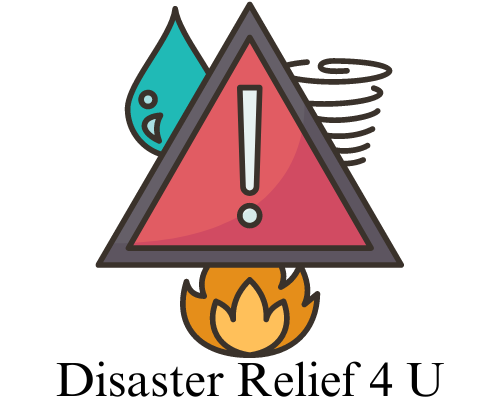A new origin story for the deadly Seattle fault
Have you ever wondered about the geological forces at play beneath the vibrant city of Seattle? Recent research has shed light on the origin story of the Seattle fault zone, a network of shallow faults that pose a threat to the Puget Sound region. This new study suggests that the fault’s history dates back over 50 million years, revealing how tectonic forces have shaped the landscape and continue to impact the area. Let’s dive into the details of this fascinating discovery and how it can improve our understanding of earthquake hazards in this densely populated region.
Unraveling the mysteries of the Seattle fault zone
The Seattle fault zone is home to a network of shallow faults that run through the metropolitan area, posing a significant seismic hazard to the region. These faults have the potential to generate large magnitude earthquakes, as demonstrated by historical events such as the 2001 Nisqually earthquake. Understanding the origin and behavior of these faults is crucial for improving our ability to predict and mitigate earthquake risks in the area.
A glimpse into the past: over 50 million years in the making
The recent study on the Seattle fault zone provides a new perspective on the geological history of the region. Researchers have found evidence that the fault’s origin story dates back over 50 million years, when tectonic forces began shaping the landscape of the Pacific Northwest. This long history of deformation and movement has led to the formation of the fault zone we see today, with its complex network of faults running beneath the city of Seattle.
Tectonic forces at play: shaping the Seattle fault zone
The Seattle fault zone is a product of ongoing tectonic deformation in the region, driven by the complex interactions of various tectonic plates. The movement of the Juan de Fuca plate beneath the North American plate has led to the formation of the fault zone, with the stresses and strains resulting from this movement manifesting as earthquakes. These tectonic forces continue to shape the region, with the potential for future seismic events that could have significant impacts on the surrounding area.
Insights from the study: understanding fault geometry and evolution
The recent study on the Seattle fault zone has provided valuable insights into the geometry and evolution of the fault system, offering new perspectives on its behavior and potential hazards. By analyzing the characteristics of the faults and their interactions, researchers have been able to better understand how the fault zone operates and how it may behave in the future.
Mapping the fault geometry: a closer look at fault structures
One of the key findings of the study is the detailed mapping of the fault geometry, which has revealed the complex network of faults that make up the Seattle fault zone. By examining the orientation, length, and connectivity of these faults, researchers have been able to develop a more accurate picture of the fault system and its potential behavior in the event of an earthquake. This detailed mapping is essential for improving hazard modeling and risk assessment in the region.
Evolution of the fault system: a dynamic process over millions of years
The study has also shed light on the evolution of the Seattle fault zone over millions of years, revealing how the fault system has changed and adapted to tectonic forces over time. By studying the geological records and features of the fault zone, researchers have been able to reconstruct the history of fault movements and understand how the faults have evolved to their current state. This insight into the long-term behavior of the fault system is crucial for predicting future seismic activity and improving our understanding of earthquake hazards in the region.
Implications for earthquake hazard modeling in the Puget Sound region
The findings of the study on the Seattle fault zone have important implications for earthquake hazard modeling in the densely populated Puget Sound region. By improving our understanding of the fault geometry, behavior, and evolution, researchers can develop more accurate models for predicting and assessing earthquake risks in the area. This information is crucial for emergency preparedness, urban planning, and risk mitigation efforts aimed at reducing the potential impacts of future seismic events.
Enhancing seismic risk assessment: preparing for the next big earthquake
With the insights gained from the study, researchers and policymakers can better prepare for the next big earthquake in the Puget Sound region. By incorporating the latest data on the Seattle fault zone into seismic hazard models, emergency management agencies can develop more effective strategies for responding to earthquake events and minimizing their impacts on communities. This proactive approach to seismic risk assessment is essential for safeguarding lives and property in this earthquake-prone region.
Urban planning considerations: building resilience in the face of seismic hazards
The new understanding of the Seattle fault zone provided by the study also has implications for urban planning and infrastructure development in the region. By considering the potential impacts of future earthquakes on buildings, roads, and other structures, city planners can design more resilient communities that can withstand seismic events. This consideration of seismic hazards in urban planning is essential for ensuring the long-term safety and sustainability of the Puget Sound region.
Conclusion
The recent study on the origin story of the deadly Seattle fault zone has provided valuable insights into the geological forces at play in the Puget Sound region. By unraveling the history of the fault system, researchers have gained a better understanding of how tectonic forces have shaped the landscape and continue to impact the area. The findings of the study have important implications for earthquake hazard modeling, emergency preparedness, and urban planning efforts aimed at reducing the risks associated with seismic events in this densely populated region. By building on this knowledge, we can work towards creating a safer and more resilient future for the residents of Seattle and the surrounding communities.
